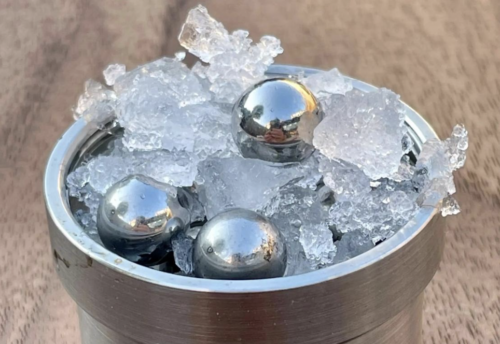Image Courtesy of Nature (Jonathan O’Callaghan).
The longstanding debate over which type of ice—cubed or crushed—is best to chill drinks is still largely undecided, but why are we limited to only two options?
In a recent Science paper, researchers at the University College London (UCL) recently discovered medium-density amorphous ice (MDA), a form of ice with the same density as liquid water but that presents a glass-like appearance. Normally, when water freezes, the molecules crystallize into a hexagonal, solid structure, the most abundant form found on Earth. Since the early twentieth century, scientists have known about low-density and high-density amorphous ice which both contain water molecules in a disordered arrangement. The former is created when water vapor freezes on a surface colder than -150 degrees Celsius, while the latter develops when normal ice is placed under high pressure at similar temperatures. Until now, however, medium-density structures were unknown.
To produce MDA, the researchers used a ball mill tool to grind down standard crystallized ice. They placed the ice in a container that shook back and forth twenty times per second, exerting a pressure high enough to synthesize the unique structure. X-ray diffraction, which measures the crystallinity of solid structures as their electrons scatter X-rays, revealed that MDA had the same haphazard structure and density as liquid water. They discovered that this liquid was analogous to the water found in moons in our solar system, such as Jupiter’s Europa and Saturn’s Enceladus. Staying curious about the universe’s complicated relationship with water might ultimately unearth the possibility of life outside our little dome.

